How to Experience Manitoba’s Waterfowl Paradise
Few places rival Manitoba when it comes to waterfowl hunting. Positioned within both the Central and Mississippi Flyways, the province serves as a major crossroads for countless migratory birds each fall. From early-season hunts for resident Canada geese to waves of ducks, migrating Canadas, and snow geese later in the season, Manitoba’s skies are alive with movement. The province’s mix of abundant bird populations, diverse habitats, and strong conservation management has made it one of North America’s premier destinations for waterfowl hunters.
What truly sets Manitoba apart is the incredible range of landscapes and hunting experiences it offers. Hunters can set up in harvested grain fields for action-packed shoots, explore marshes and wetlands for fast-paced diver duck hunts, or venture north to the Hudson Bay coast for unforgettable snow goose hunts along the tundra. From prairie potholes to northern coastal flats, Manitoba delivers a remarkable variety of opportunities to experience virtually every style of waterfowl hunting imaginable.
From Coast to Prairie: Waterfowl Hunting Across Manitoba
Manitoba offers one of the most geographically diverse waterfowl-hunting experiences in North America, where every region offers its own unique setting and style of hunt. From the tundra coastline of the north to the rolling farmland of the south, hunters can find flocks of ducks, geese, and cranes nearly anywhere in the province.
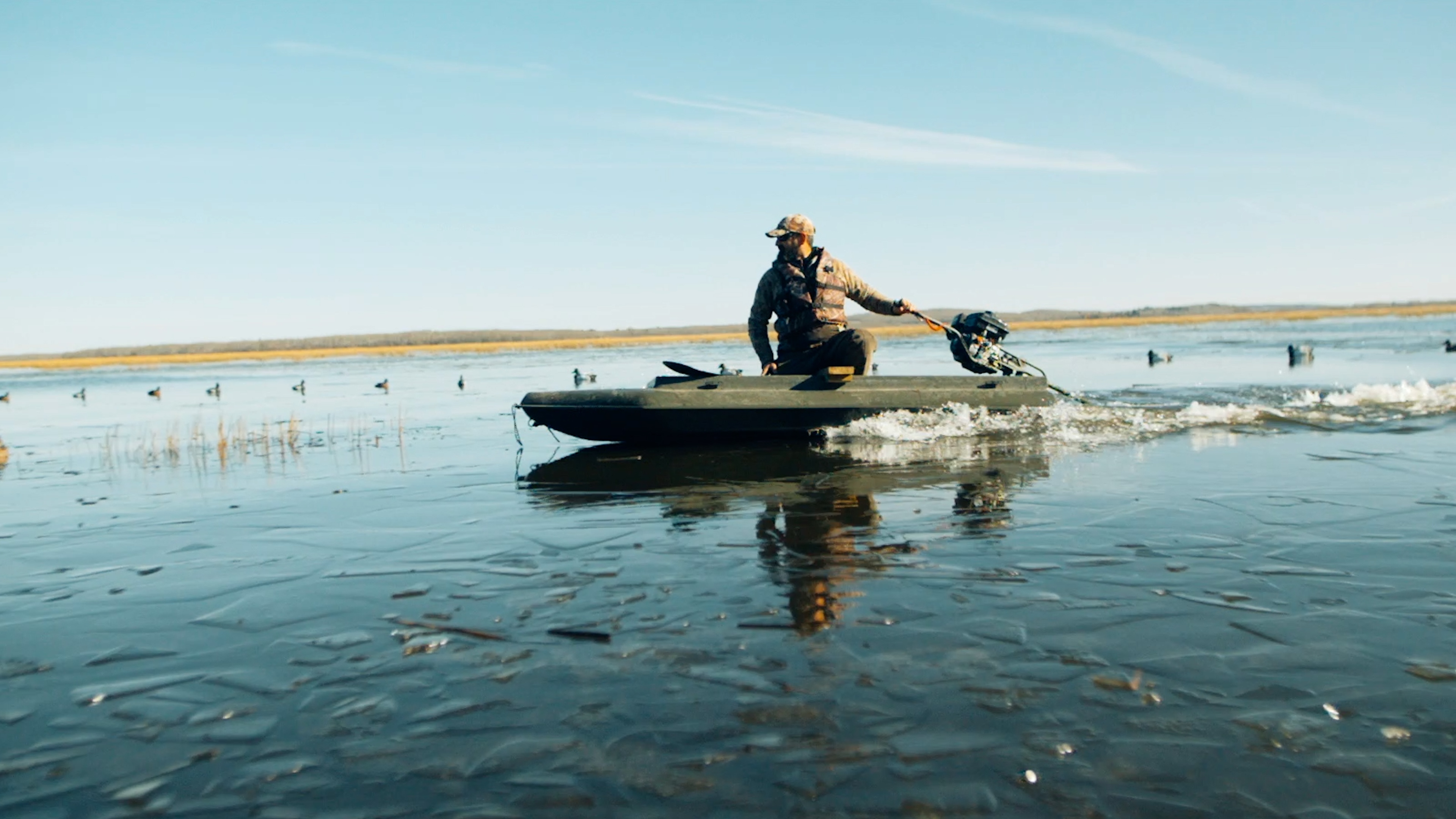
Along the rugged shores of Hudson Bay, outfitters like Kaska Goose Lodge provide an unforgettable northern experience. Here, massive concentrations of snow geese stage during their migration, offering hunters a front-row seat to one of nature’s greatest spectacles. Moving inland, the northern region around The Pas is defined by vast lakes, winding river systems, and sprawling wetlands. This area provides exceptional opportunities for mixed-bag hunts where mallards, divers, and geese share the same skies.
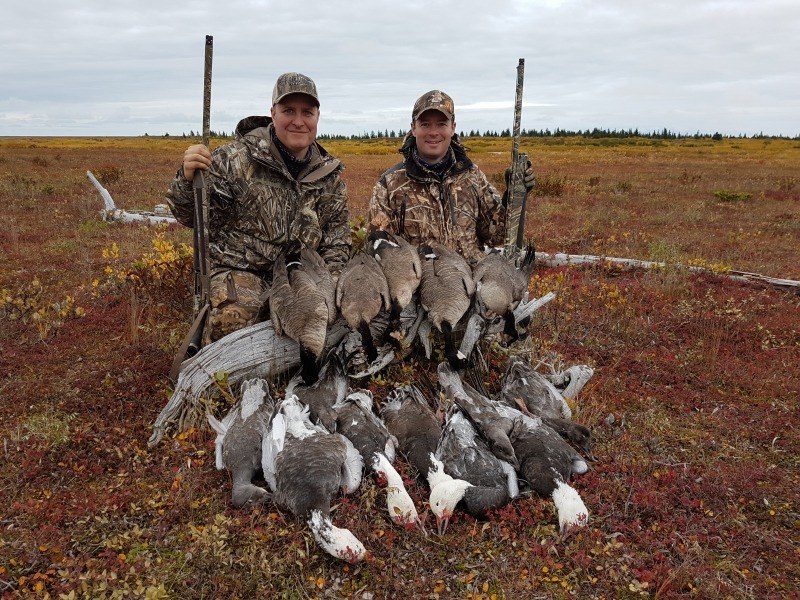
Further south, the Interlake and Parkland regions form a transition zone between boreal forest and open farmland. Outfitters such as Sleeve Lake Outfitters and Harvest Lodge offer access to prime agricultural fields bordered by marshes and small lakes, producing consistent success for both field and water hunts. There are also many other excellent outfitters in the region, providing guided experiences for a variety of skill levels and hunting styles. Check our website for a full list. Continuing down into the heart of the prairies, Stanley’s Goose Camp showcases the province’s classic stubble-field hunting experience, fast-paced mornings with decoying Canadas and snow geese filling the horizon.
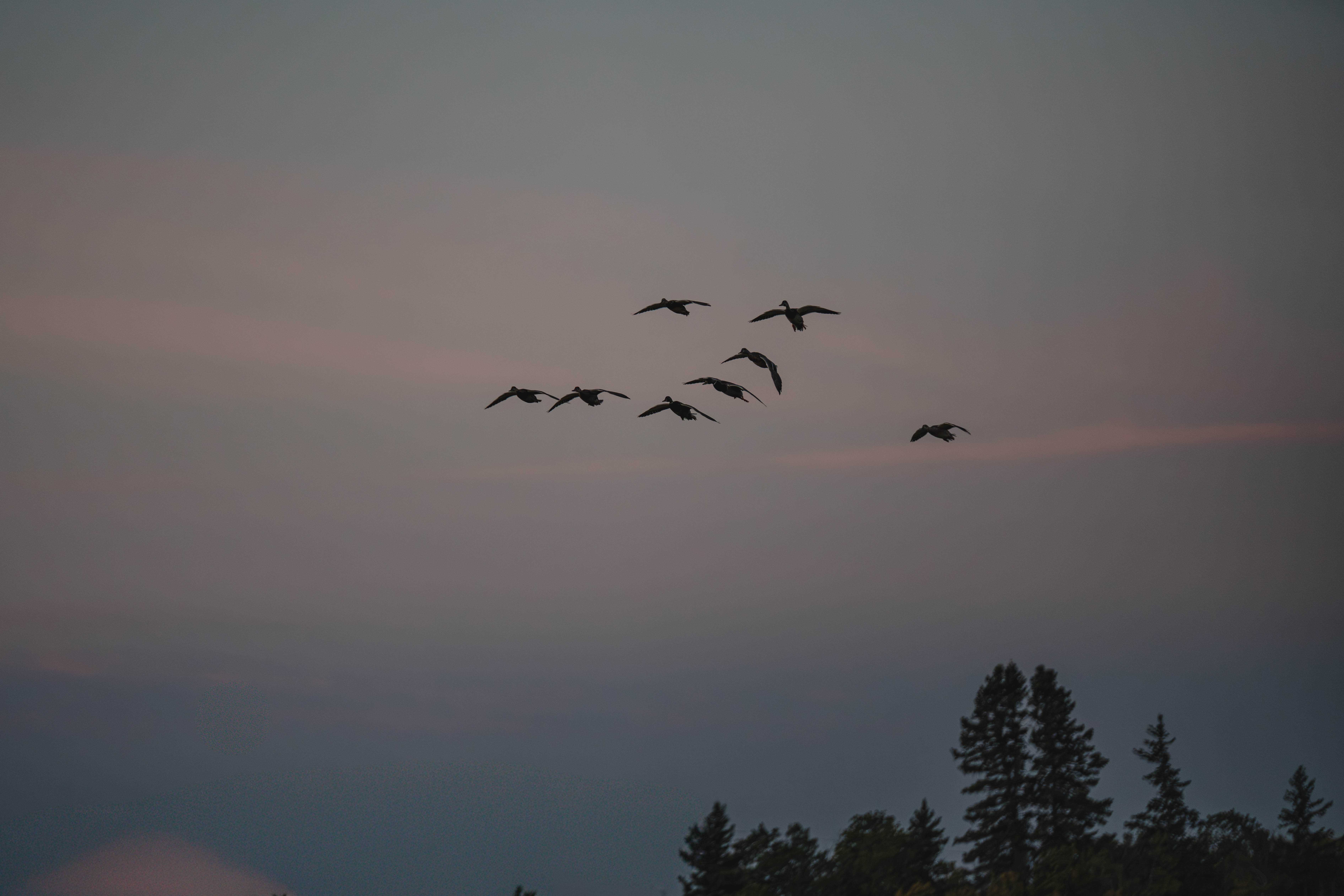
In the southwest, rolling hills and grain country provide the scenic backdrop for hunts with Birdtail Waterfowl, where mixed flocks of geese and ducks funnel through rich feeding grounds. Finally, heading east, the Canadian Shield region transforms the landscape once again. Towering pines, rocky shorelines, and pristine lakes make for a breathtaking setting with outfitters like Trail End Camp, where hunters can pursue divers and puddle ducks in a truly wild environment.
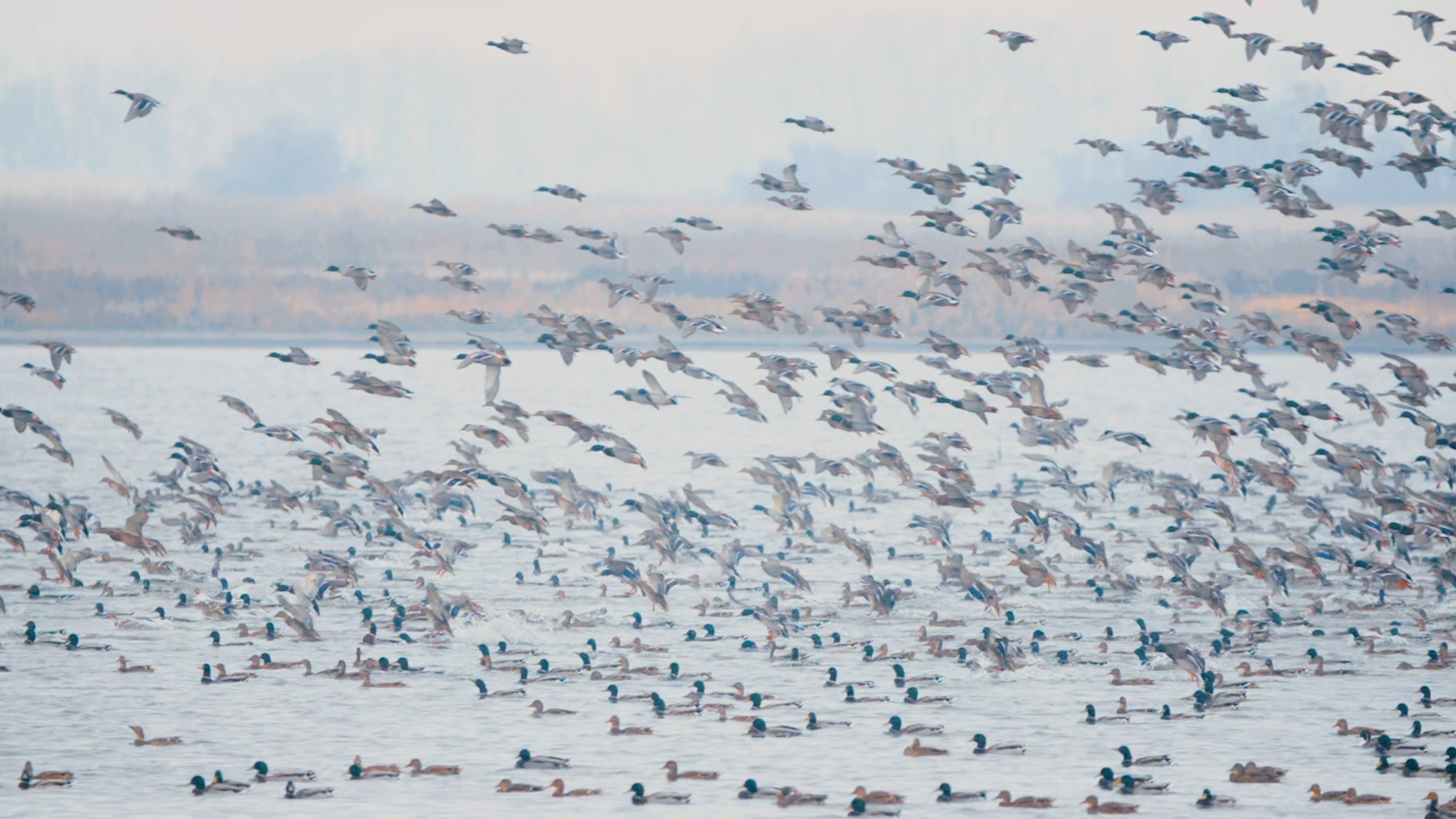
No matter where you travel, Manitoba offers an abundance of waterfowl and landscapes that cater to every hunter’s preference. From coastal tundra to prairie fields, and from remote lakes to shield country, you can truly hunt waterfowl in every corner of the province.
DIY: Waterfowl Hunting in Manitoba
While Manitoba is home to an incredible lineup of professional outfitters offering fully guided waterfowl experiences, the province also welcomes hunters who prefer to plan their own adventure. A do-it-yourself waterfowl hunt in Manitoba can be an incredibly rewarding way to experience the province’s rich bird populations and vast public landscapes.

Manitoba residents and Canadian resident hunters can easily purchase licenses online through the Manitoba eLicensing program. Hunters simply need to pair their provincial license with the Federal Migratory Game Bird Stamp, which is also available for purchase online.
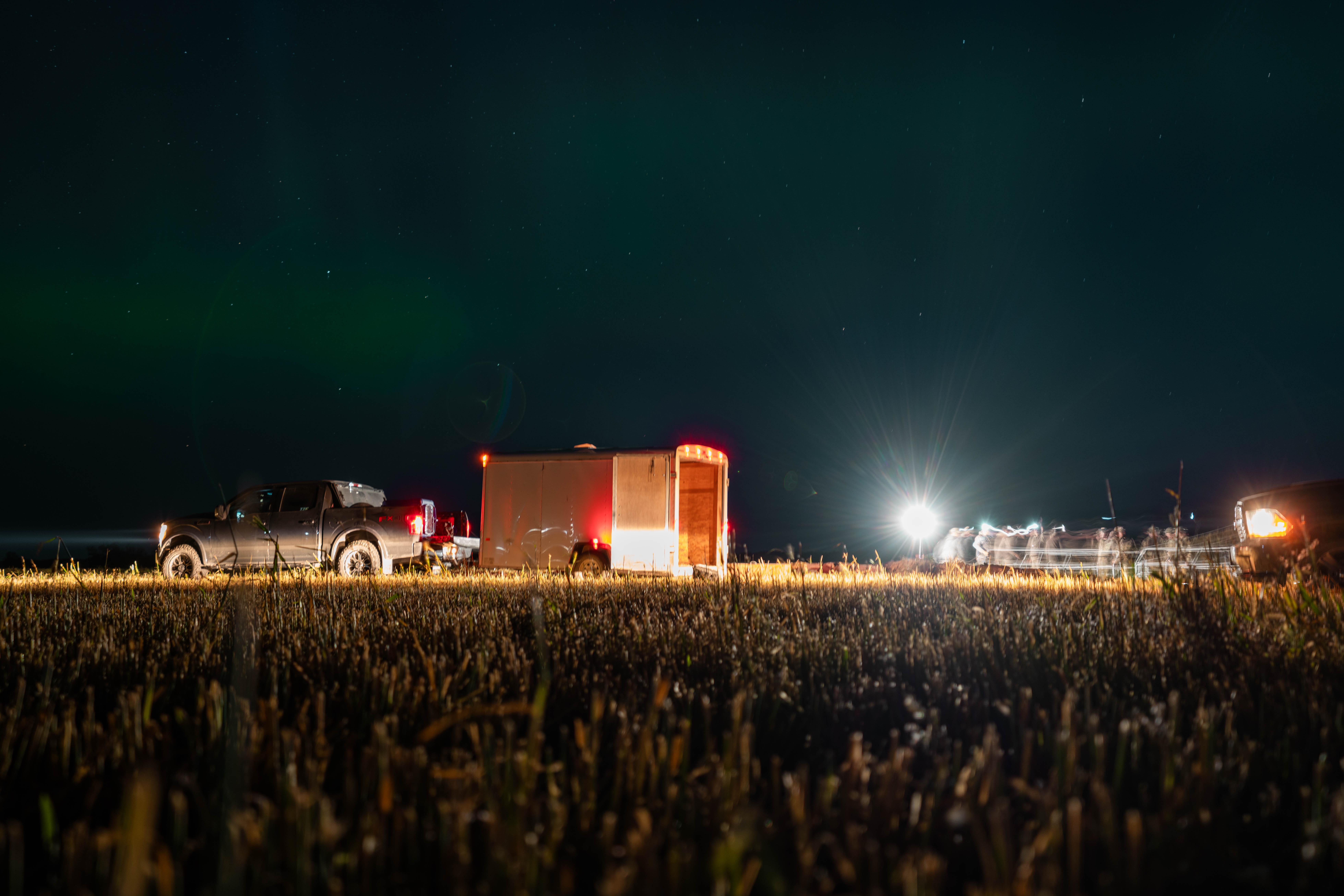
For American and other non-Canadian hunters, Manitoba offers a straightforward draw system for DIY opportunities. From June 15th - July 15th, applicants can enter the Manitoba Non-Canadian Migratory Game Bird Draw for a chance to obtain a seven-day permit to hunt in the province. With a high success rate, successful applicants can select the dates they wish to hunt, purchase the Federal Migratory Game Bird Stamp, and be fully licensed to experience Manitoba’s world-class waterfowl opportunities firsthand.
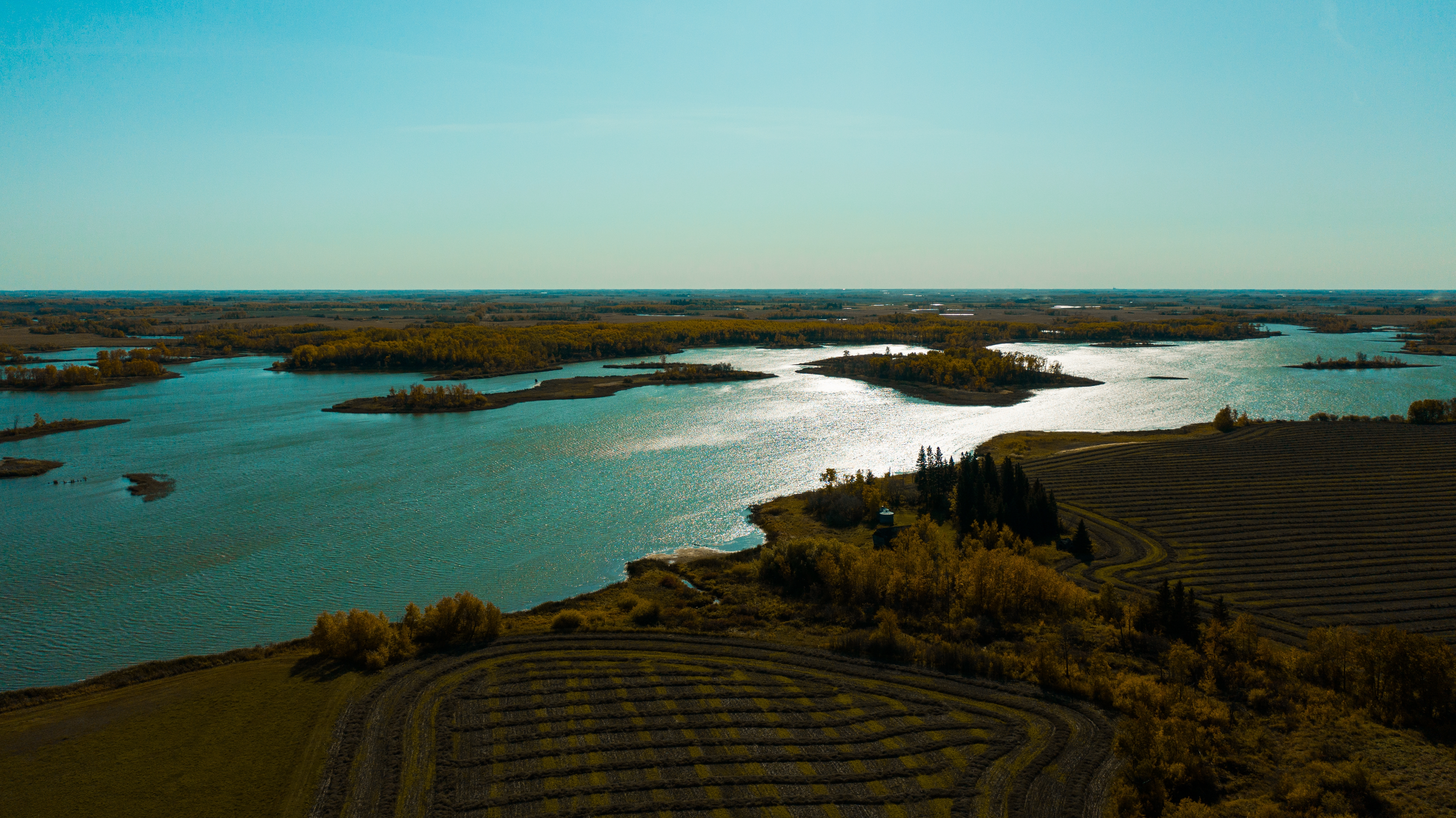
From prairie potholes and harvested grain fields to northern lakes and marshes, Manitoba offers endless locations for independent hunters to explore. There’s no shortage of ways to approach a DIY waterfowl hunt here, and in the next section, we’ll break down key strategies and practical tips, starting with one of the most important aspects of all: scouting.
Scouting: Finding the Best Fields and Waterways
When scouting for waterfowl, DIY hunters typically focus on two main styles of hunting: field hunts and water hunts. Among the two, field hunts tend to be the most popular across Manitoba’s agricultural regions. The key to success is simple: spend time on the backroads and keep your eyes open for freshly harvested fields that are drawing in birds. Waterfowl are drawn to fields with leftover grain, particularly crops like oats, barley, corn, and peas. Keeping track of these fields throughout the summer, identifying which crops are being grown and where harvests are occurring, can give you a major advantage once the season opens.
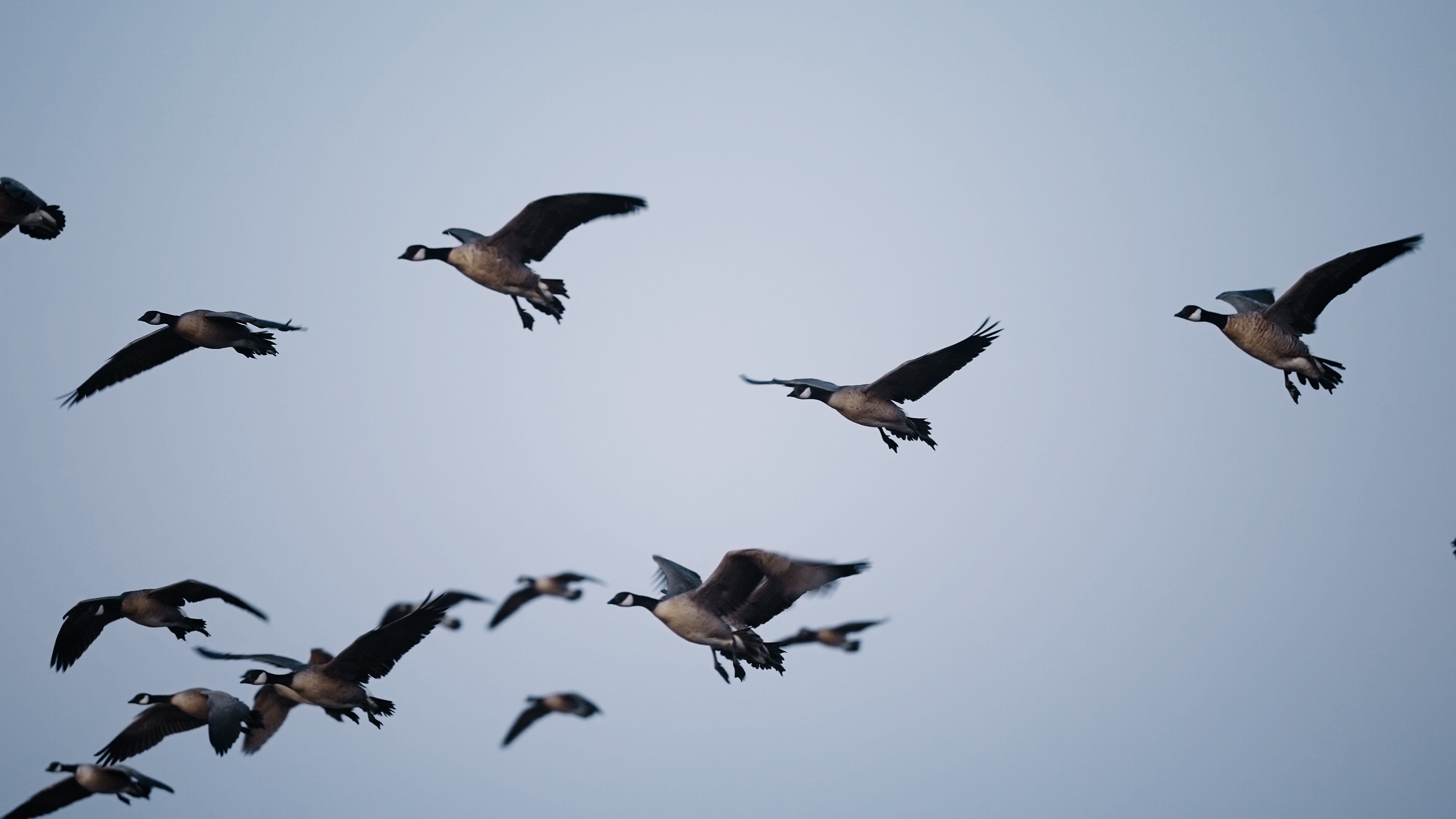
When you locate a field holding a good number of birds, the next step is to obtain landowner permission. The iHunter app is an excellent resource for this, offering land ownership overlays that make it easy to identify and contact the right person. Once permission is secured, it’s time to study the field in more detail. Watch where the birds are landing, as they tend to return to the same spots during their next feed. Waterfowl generally feed both in the morning and in the evening, so timing is crucial. In the morning, you’ll want to be set up well before legal shooting light, and for evening hunts, plan to be in position by around 4 p.m. or earlier. to catch the early movement.
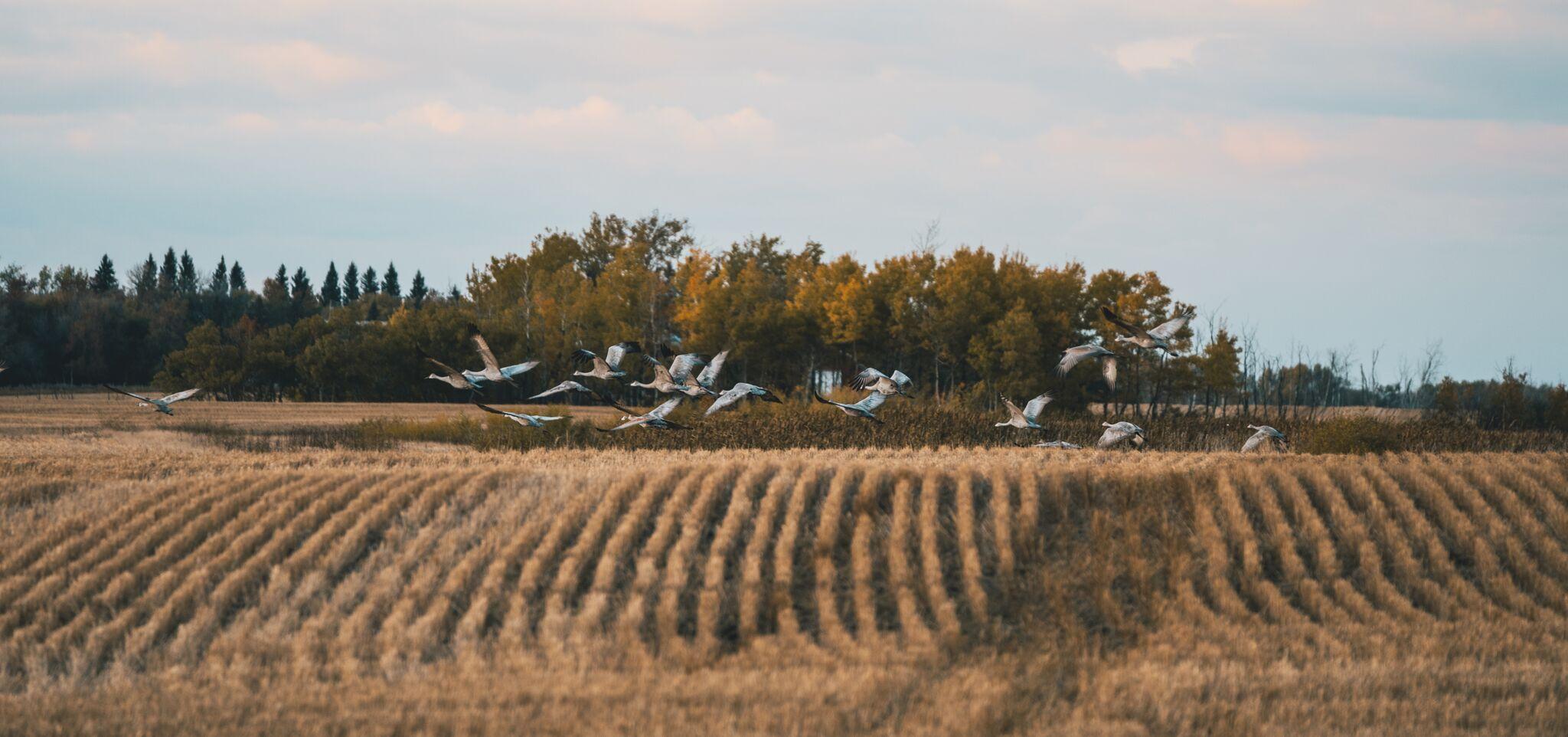
As you scout, look for natural cover that can help you stay concealed. Features like willow bluffs, unharvested strips of crop, rock piles, or fencelines can all serve as excellent hiding spots. Noting these details ahead of time will set you up for a more successful and well-hidden hunt. In the next section, we’ll dive deeper into concealment strategies and decoy set-ups.
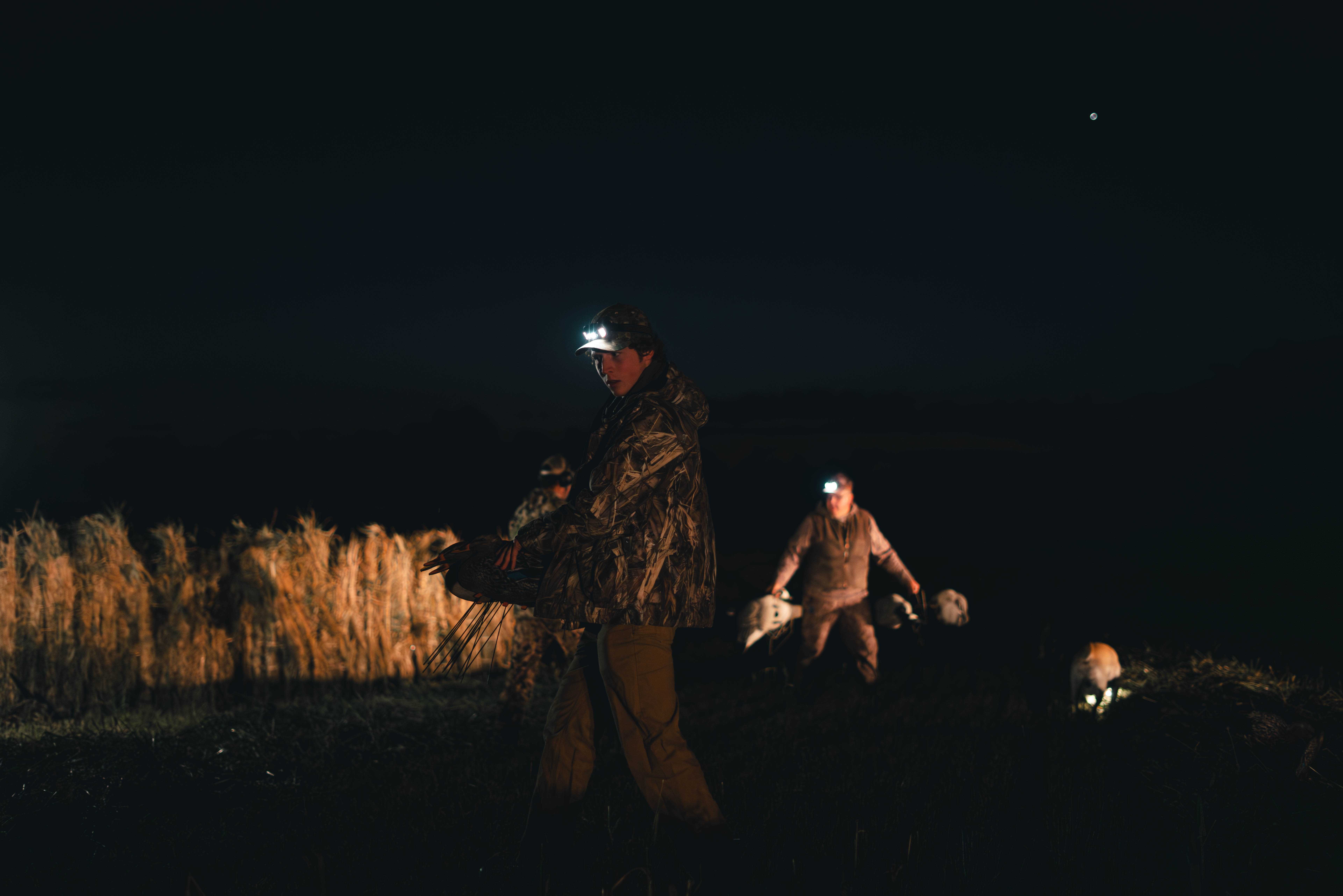
Set-ups: Decoys
There are countless ways to arrange a decoy spread, and every waterfowl hunter has their preferred style. Regardless of the setup, wind direction should always guide your plan. Ducks and geese always land into the wind, using it to slow their descent and maintain control, so you’ll want to build your spread with a clear landing pocket that lines up with the wind and your hide.
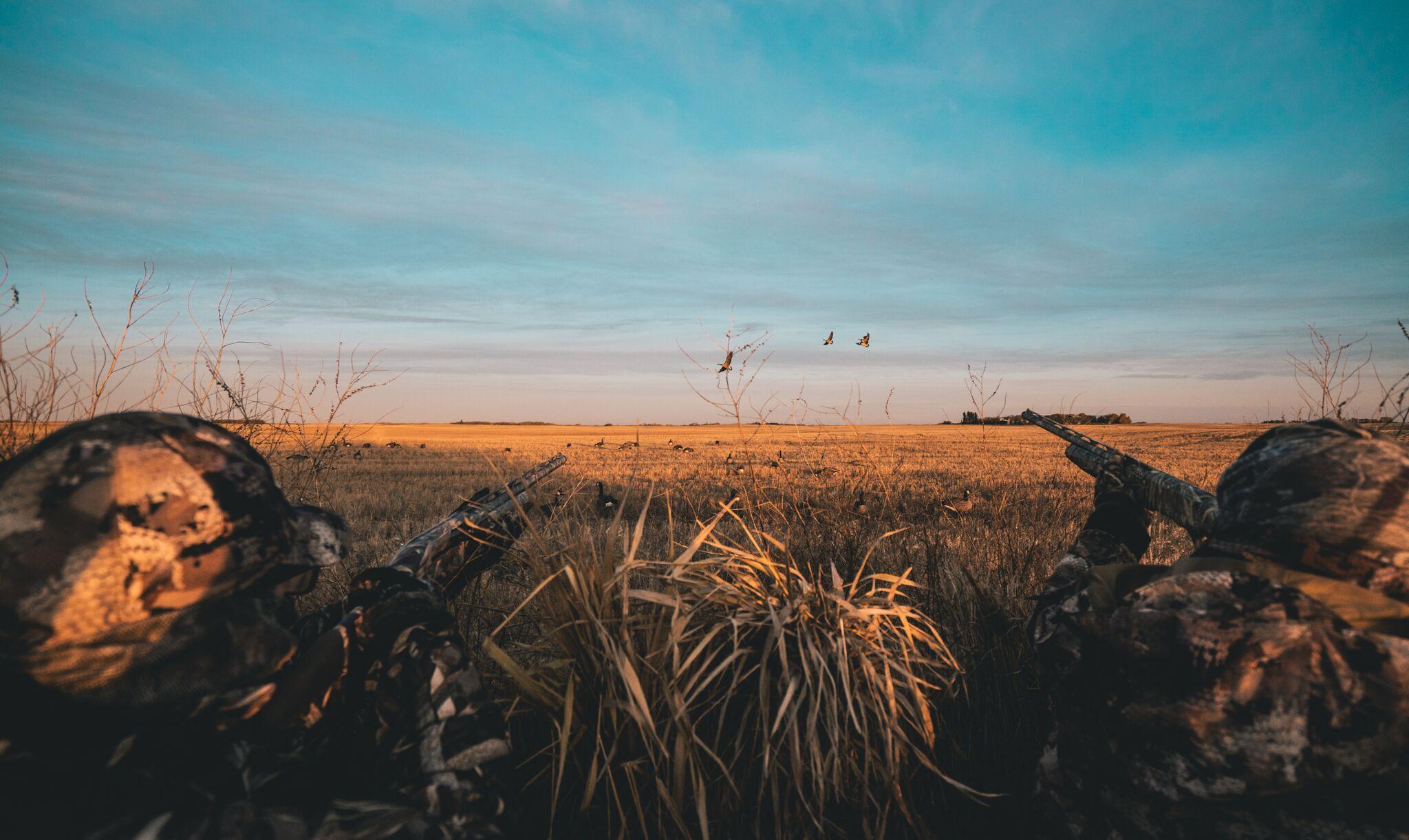
A classic “U-shaped" formation is one of the most common setups for both geese and ducks. The open end of the U should face upwind, creating a natural landing zone in the center of the spread. Birds approaching from downwind will see that open pocket as a safe, inviting place to land among other “feeding” birds. You can position your blind or layout near the downwind edge of the spread so birds finish right in front of you as they glide into the pocket. Ideally, you want the middle of your pocket to be no more than 30 to 40 yards from your blind to ensure you have a close, ethical shot when the opportunity comes.
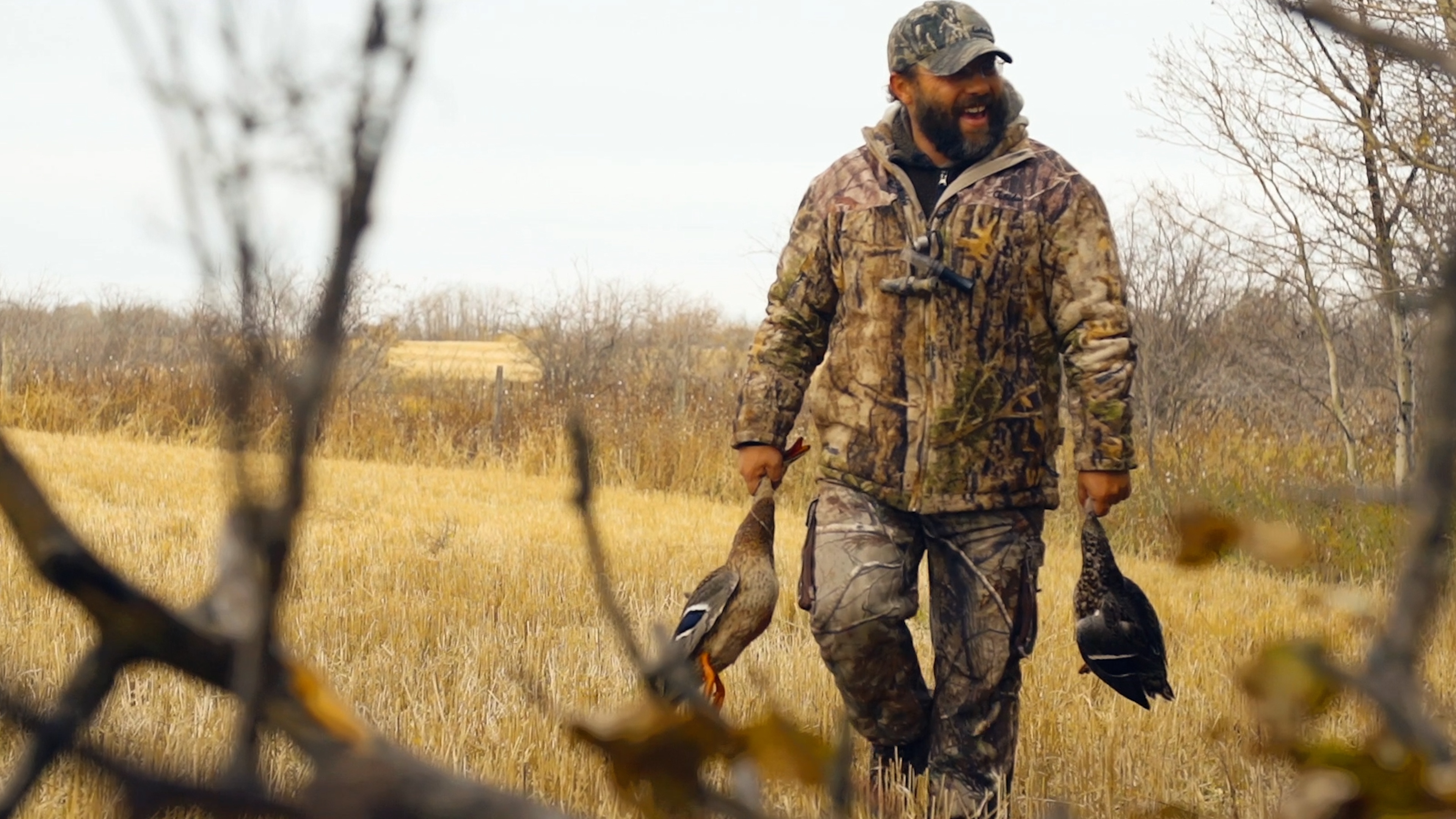
Some hunters prefer slight variations, such as an “L” or “J-shaped" spread or two parallel lines of decoys that form a landing “runway.” The principle is the same: leave an open pocket downwind, and keep your hide positioned where finishing birds naturally want to set down.
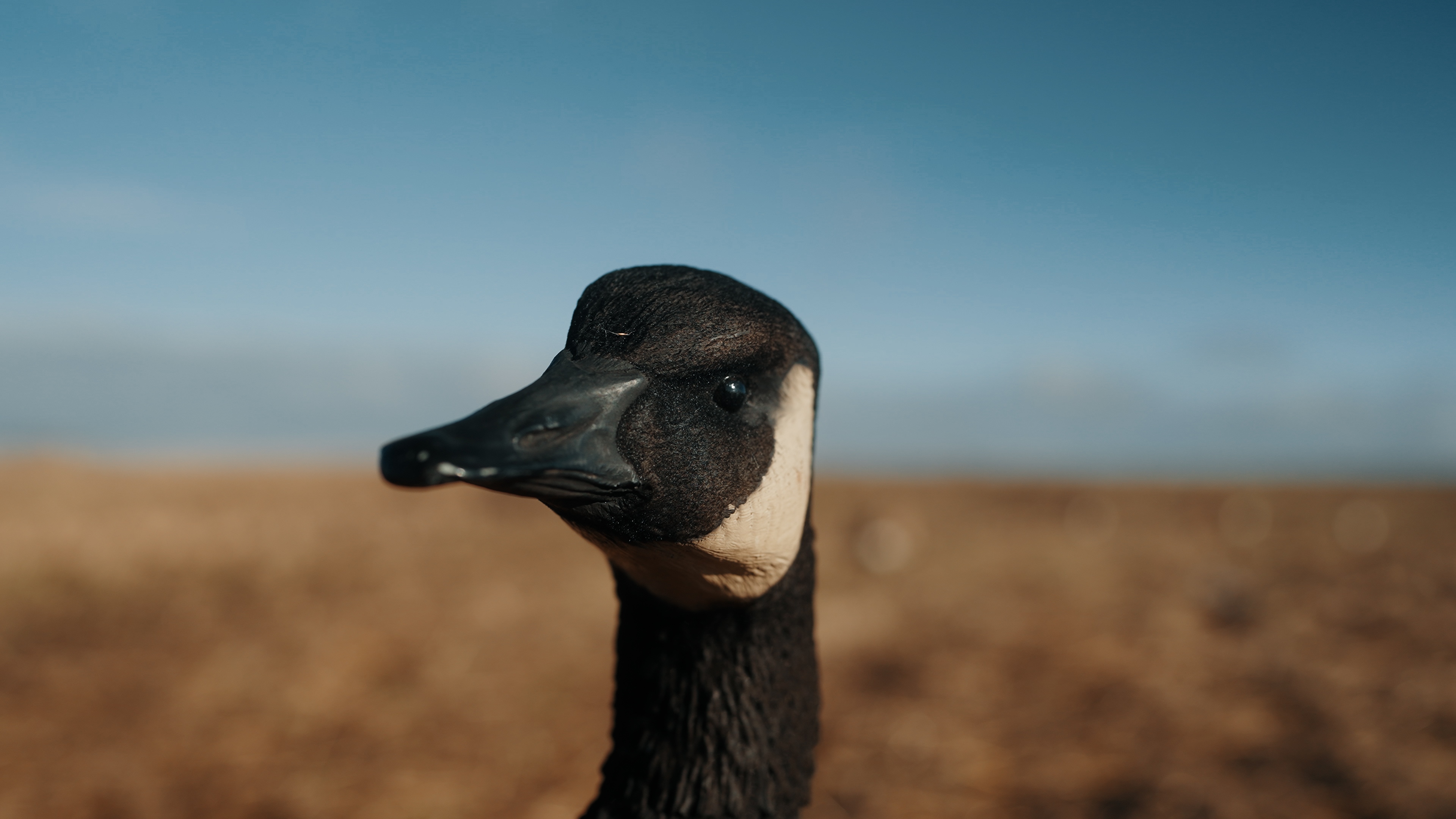
For ducks, spinning-wing decoys — often called “Robo Ducks” — can be incredibly effective at drawing birds in close. The flash of those spinning wings is visible from long distances and often seals the deal for wary birds. Place them near the bottom of your U or just off the edge of your landing zone to pull ducks into range. However, spinning wings can sometimes flare geese, so once geese start moving, it’s best to switch them off or remove them entirely.
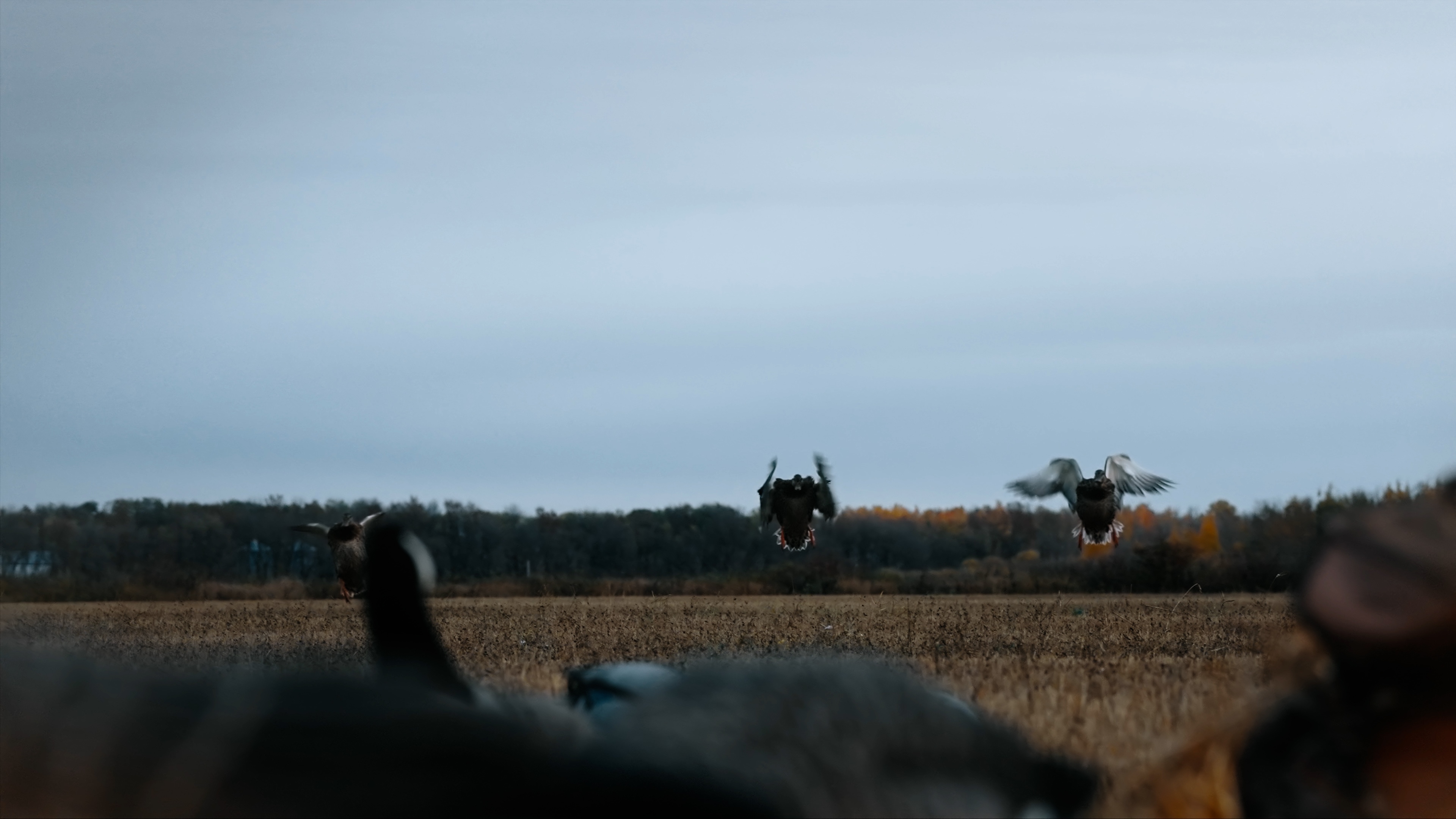
If the wind shifts during your hunt, adjust your spread so the opening still faces upwind. Small tweaks like this can make the difference between birds sliding out of range or finishing perfectly in your pocket. No matter the setup, focus on natural spacing, realistic motion, and leaving a clear approach path for birds to land. These fundamentals will help make your spread work no matter where you hunt in Manitoba.
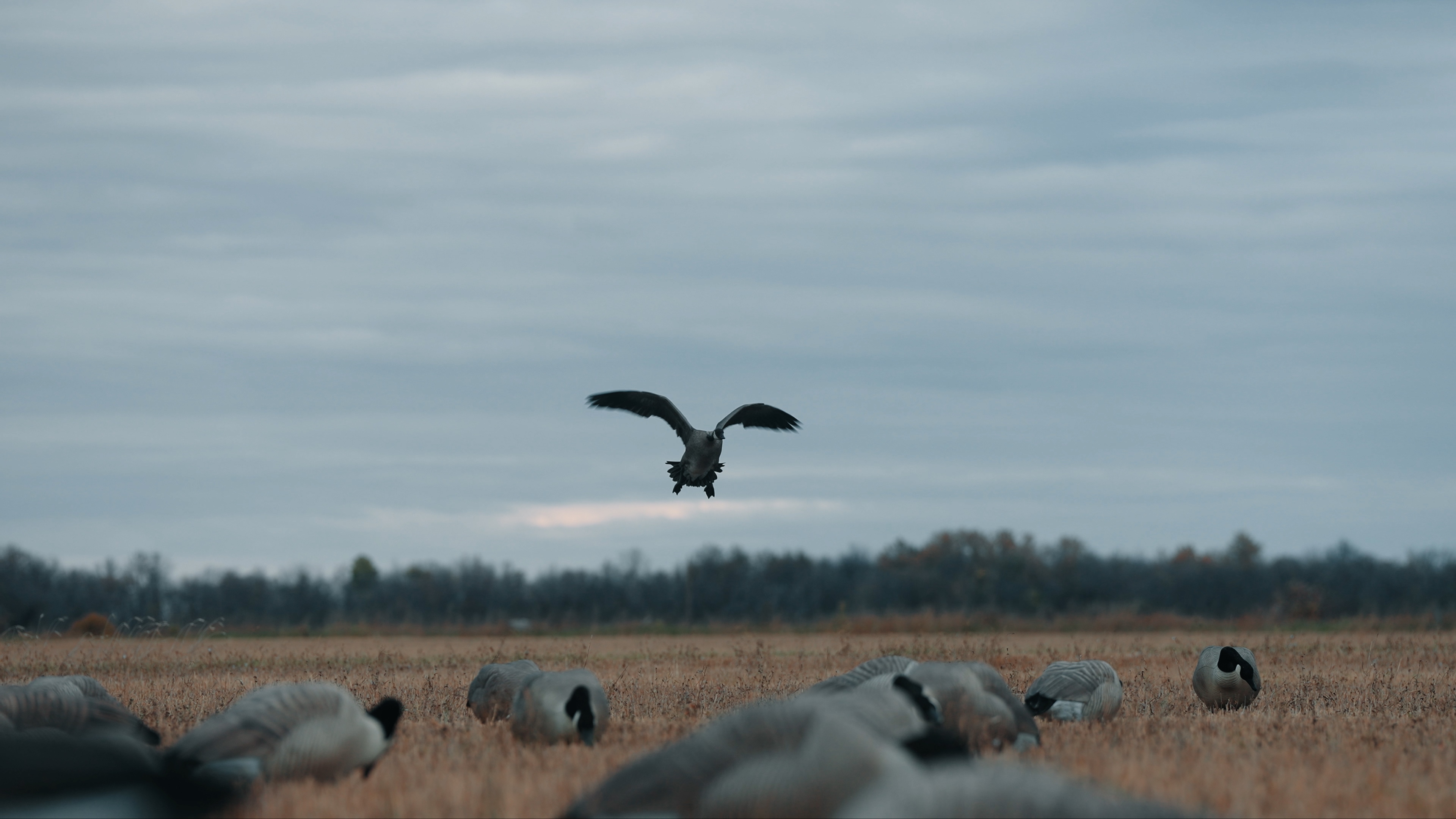
Set-ups: Blinds
When it comes to blinds and placement, two key factors determine your success: concealment and positioning. Ideally, you’ll have found some form of natural cover to help your blind blend seamlessly into the surroundings. From there, the goal is to position your hide near the downwind edge of your decoy spread, so birds finish directly in front of you as they approach the pocket. Even the best decoy setup can fail if the blinds stick out or cast a shadow that puts birds on alert.
There are three main styles of blinds that waterfowl hunters in Manitoba rely on: laydown blinds, A-frame blinds, and natural blinds. Each has its strengths depending on the field, terrain, and conditions.
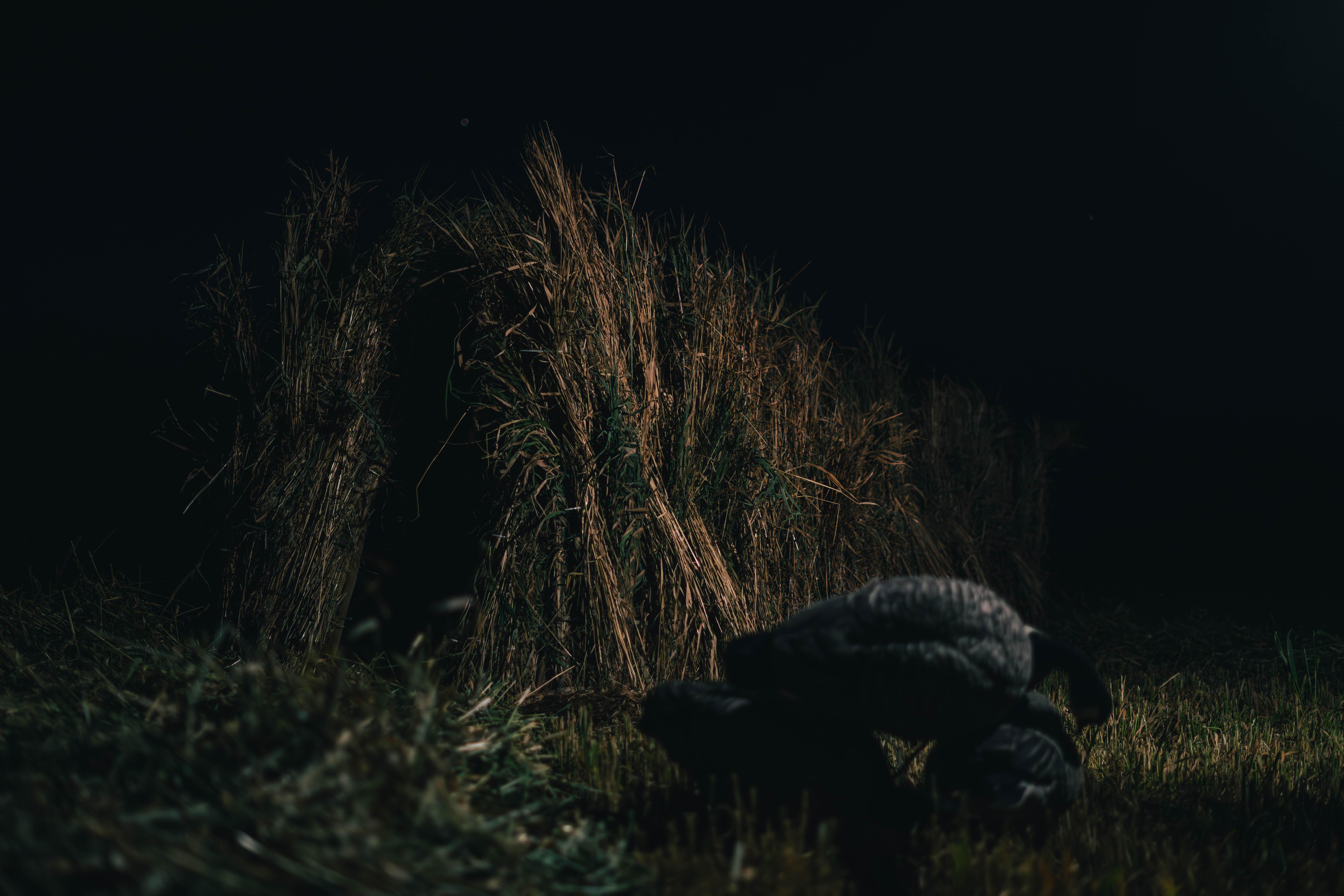
Laydown Blinds:
- Also called coffin blinds, these are low-profile hides that let you lie flat on your back with top doors that flip open when it’s time to shoot. They’re at their best when set up in fields with tall stubble, windrows, or unharvested crop strips, where their shape can naturally disappear into the texture of the field. The secret to success with laydown blinds is in the brushing. Most have built-in straps designed to hold grass, straw, or stubble, which allows you to blend perfectly into your surroundings. The more time you take to brush them in properly, the better your odds of staying invisible to incoming birds.
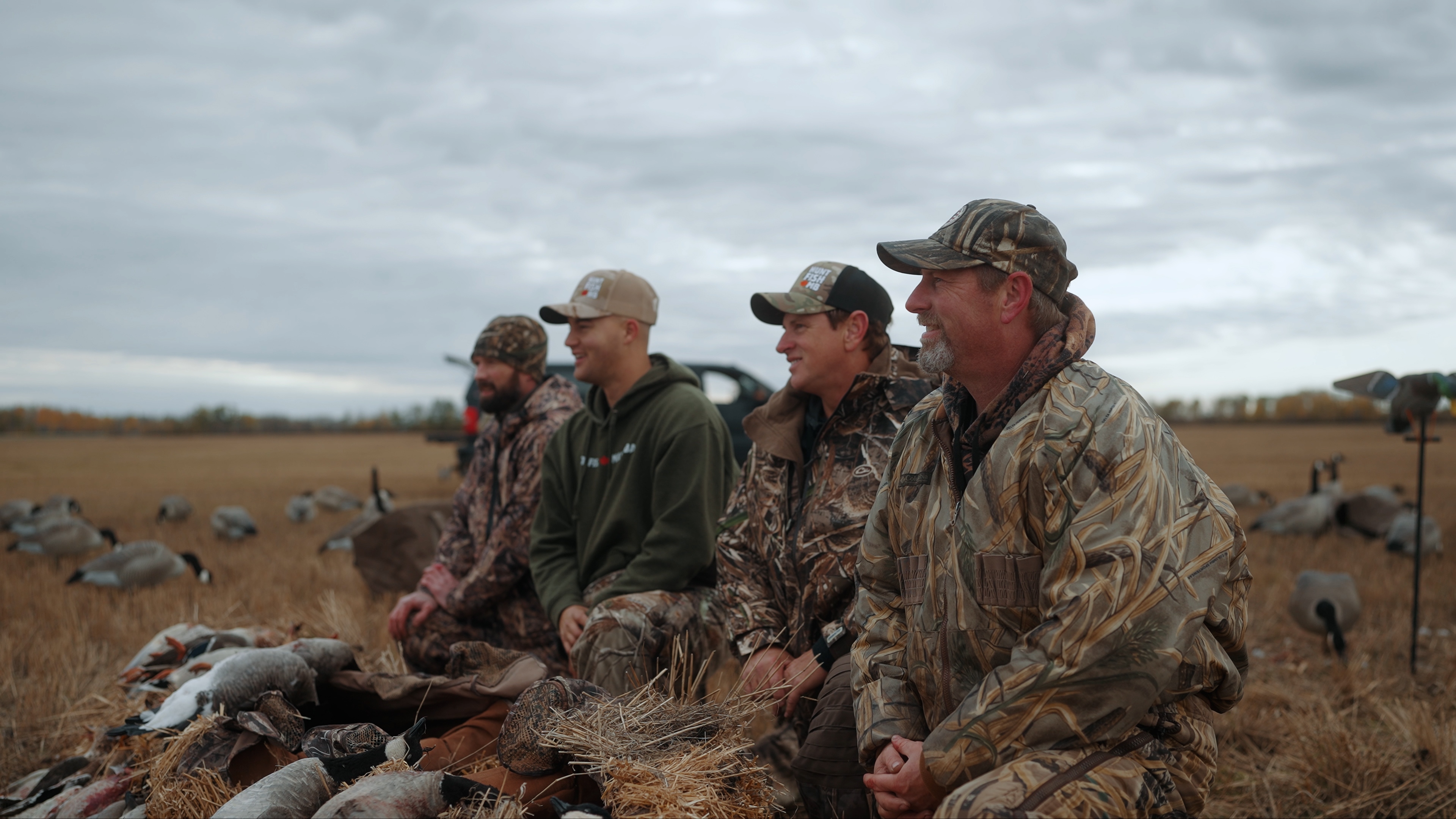
A-Frame Blinds:
- A-frame blinds consist of two angled walls that meet at the top, forming an “A” shape. Hunters sit inside and rise to shoot through the open roof line. These blinds work best when tucked against willow bushes, ditches, fencelines, cattail edges, or unharvested corn strips, where they can be brushed in with matching vegetation. A-frames are also an excellent solution for bare or black fields, where there’s no natural cover for a laydown blind. In those situations, you can brush the A-frame to mimic a small bush or patch of vegetation, making it blend naturally into the otherwise open landscape. As with all blinds, the more effort you put into brushing and shaping your hide, the more natural it will look to circling birds.
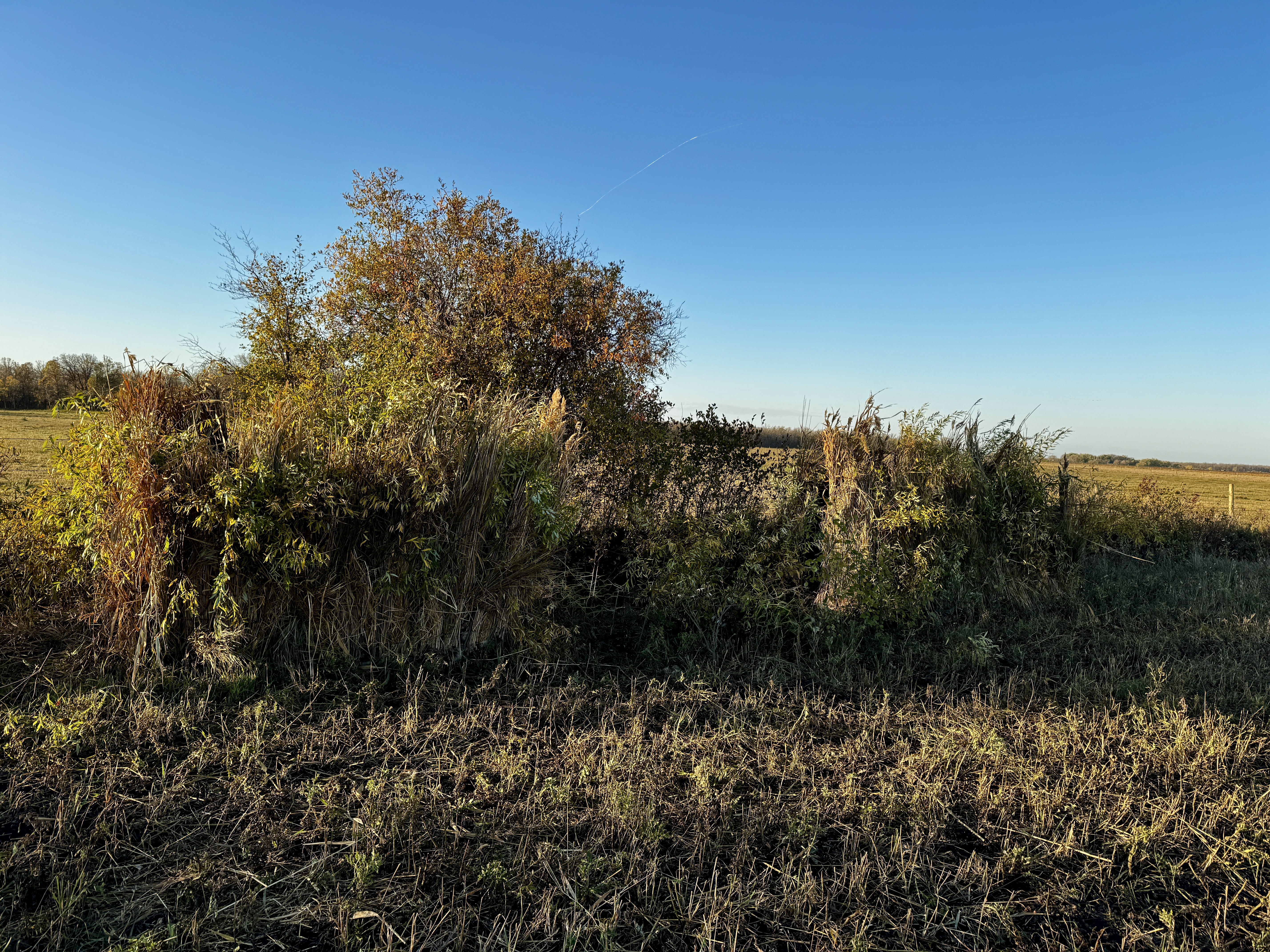
Natural Blinds:
- When conditions allow, nothing beats using what the landscape already provides. Natural blinds can be as simple as tucking into a bush line, shelterbelt, or patch of cattails near where the birds are feeding. This approach eliminates the need to pack or brush in gear and can offer unbeatable concealment when done right. The key is to find cover that breaks up your outline but still allows enough room to shoulder your gun and swing freely.
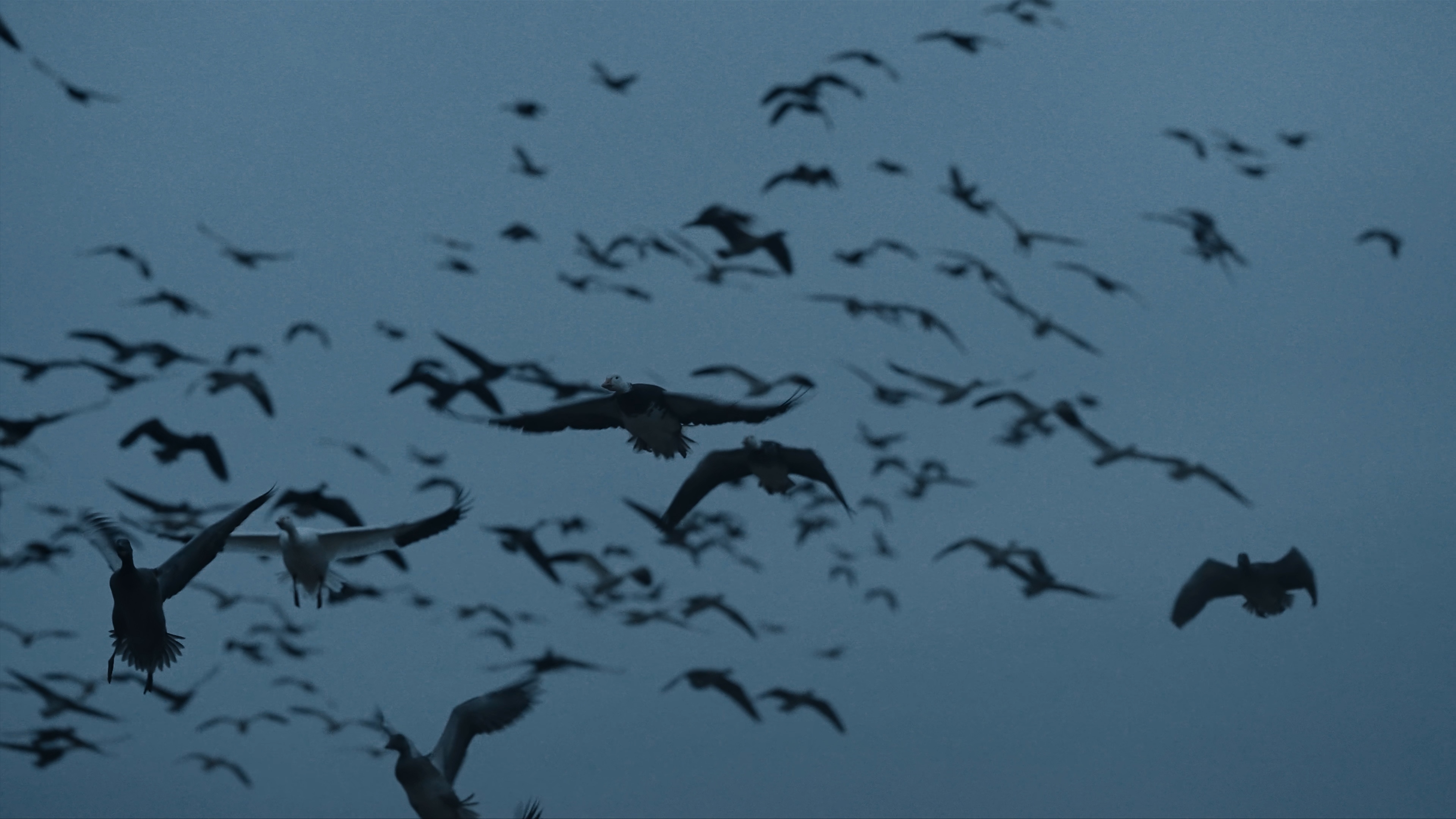
Whether you’re running a brushed-up A-frame, lying flat in a stubble field, or tucked into a cattail edge, blending into the environment is what separates a close finish from a flyover. Take your time with concealment, match your blind to the landscape, and make sure the setup complements your decoy spread. The more natural it looks, the better your hunt will be.
Calling: Mastering the Sound of Success
When it comes to calling, it can often be the difference between birds finishing in your spread or sliding out of range. There are hundreds of calls on the market, from affordable beginner options to high-end custom builds, but at the end of the day, they all serve the same purpose: mimicking the natural sounds of ducks and geese. The real difference comes from the person using it. A call is like a musical instrument: the more time you spend practicing, the better you’ll sound and the more natural your cadence will become.
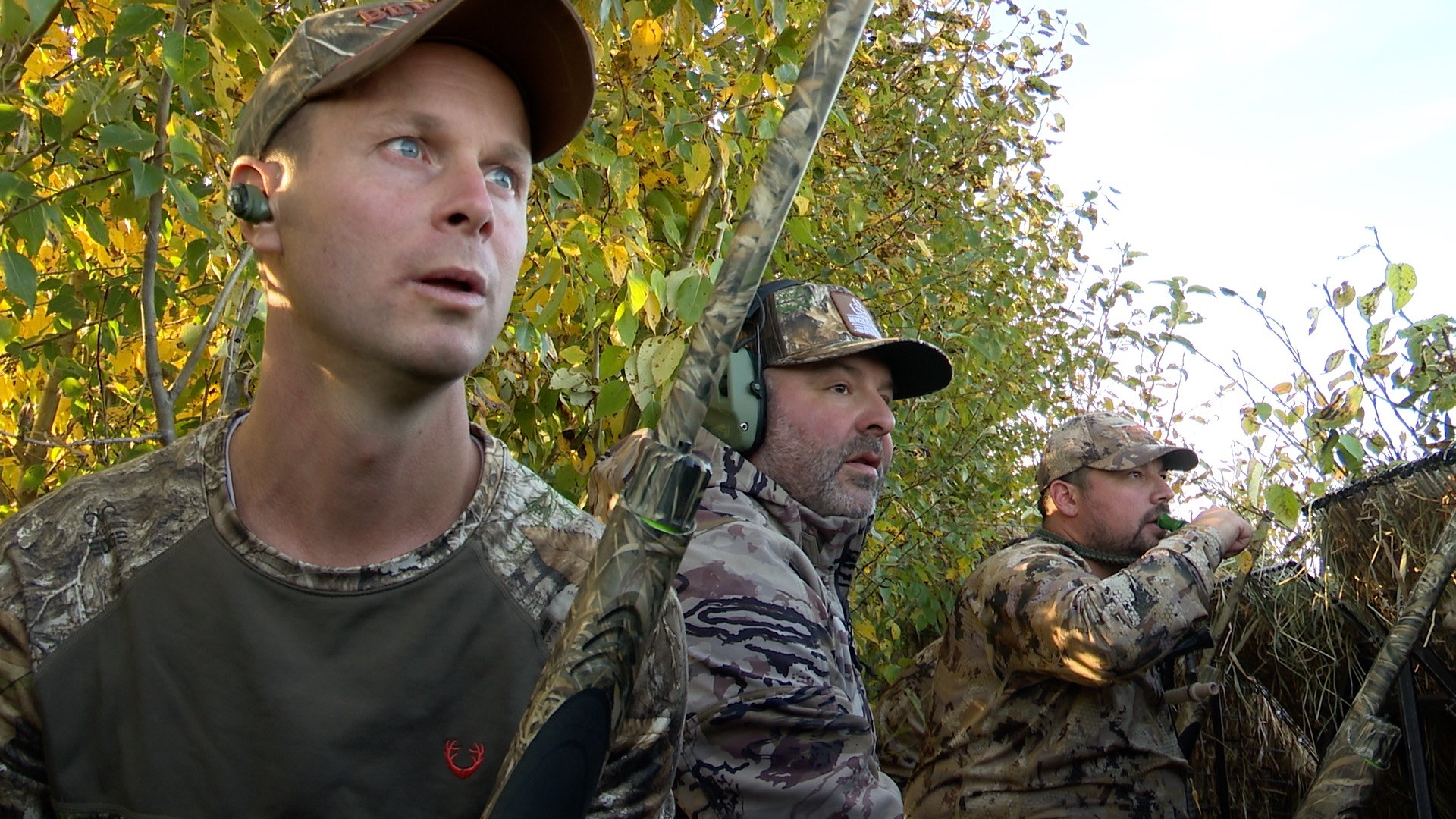
A few minutes of calling practice every day can make a big impact once you’re in the field. Learning what each sound communicates —chatter, feeding calls, comeback calls, or soft clucks —can help you read the birds and adjust your tone accordingly. There are countless online resources and tutorials from professional callers that can guide you through the basics and help refine your rhythm.
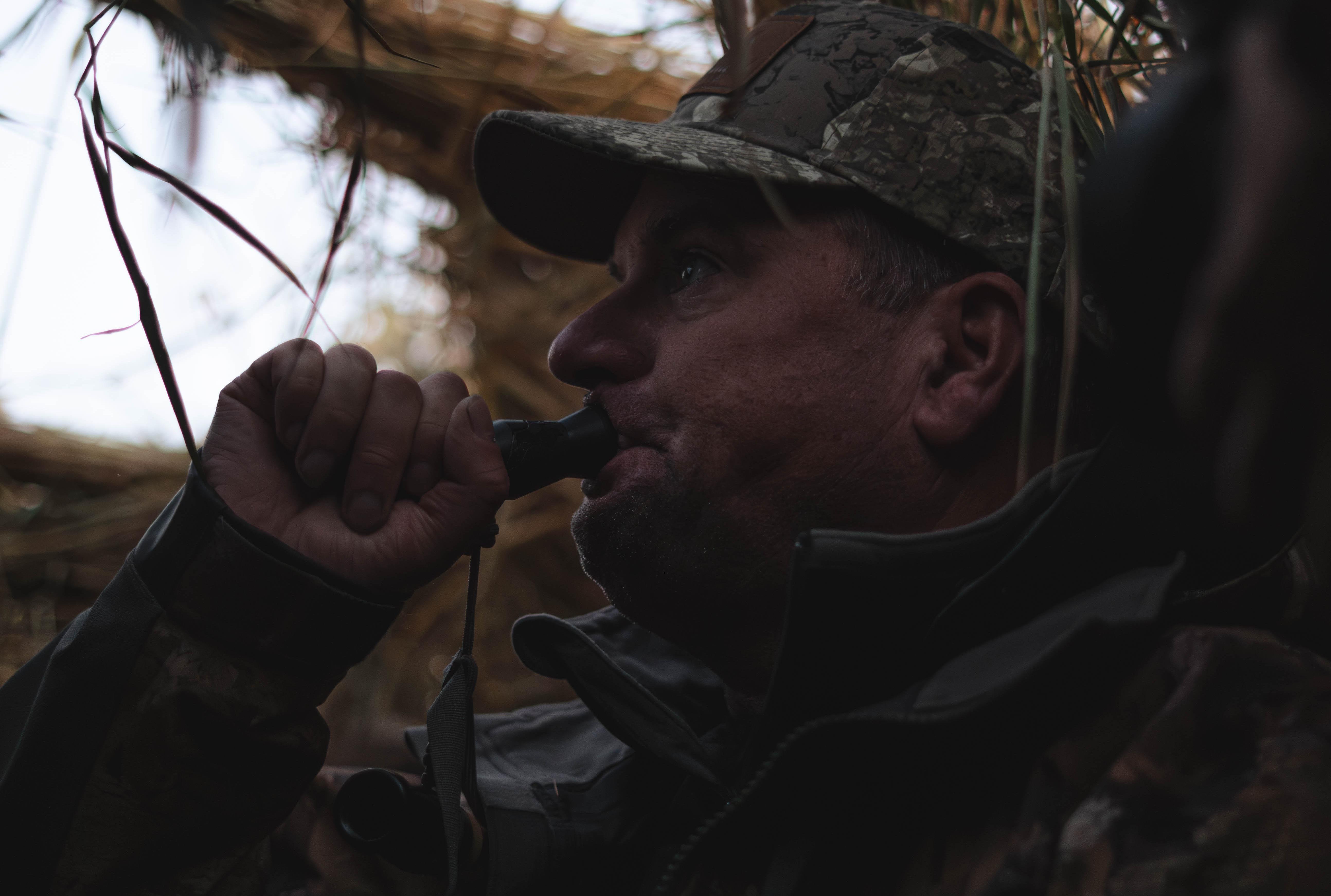
Calling also plays a particularly important role during foggy mornings or low-visibility days, when birds rely more on sound than sight. In those conditions, a well-timed series of honks or quacks can act as a beacon, guiding birds toward your spread through the mist. It’s not about constant noise, but rather well-placed, confident calling that gives birds a clear signal of safety and presence. Whether you’re working a flock in clear skies or trying to pull birds in through thick fog, effective calling adds a vital layer of realism that can turn a slow hunt into a memorable one.
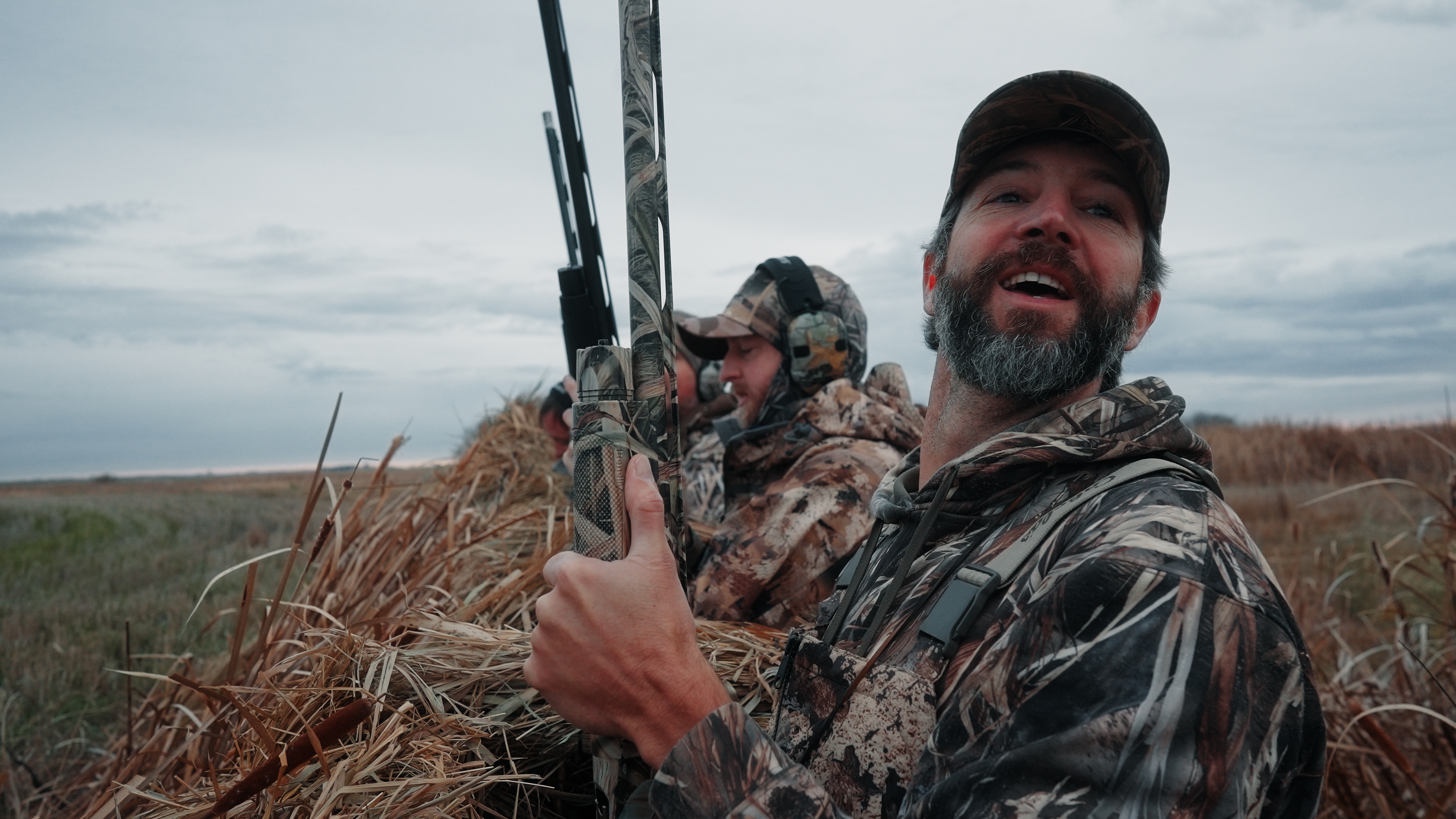
Why Manitoba Belongs at the Top of Every Waterfowler’s List
From the northern tundra of Hudson Bay to the rolling prairie fields of the southwest, Manitoba offers one of the most diverse and rewarding waterfowl hunting experiences in North America. Whether you’re booking a guided hunt with one of the province’s many world-class outfitters or setting out on your own DIY adventure, every corner of Manitoba holds opportunity. The combination of varied landscapes, abundant bird populations, and wide-open access to both field and water hunts makes this province a true waterfowler’s paradise.
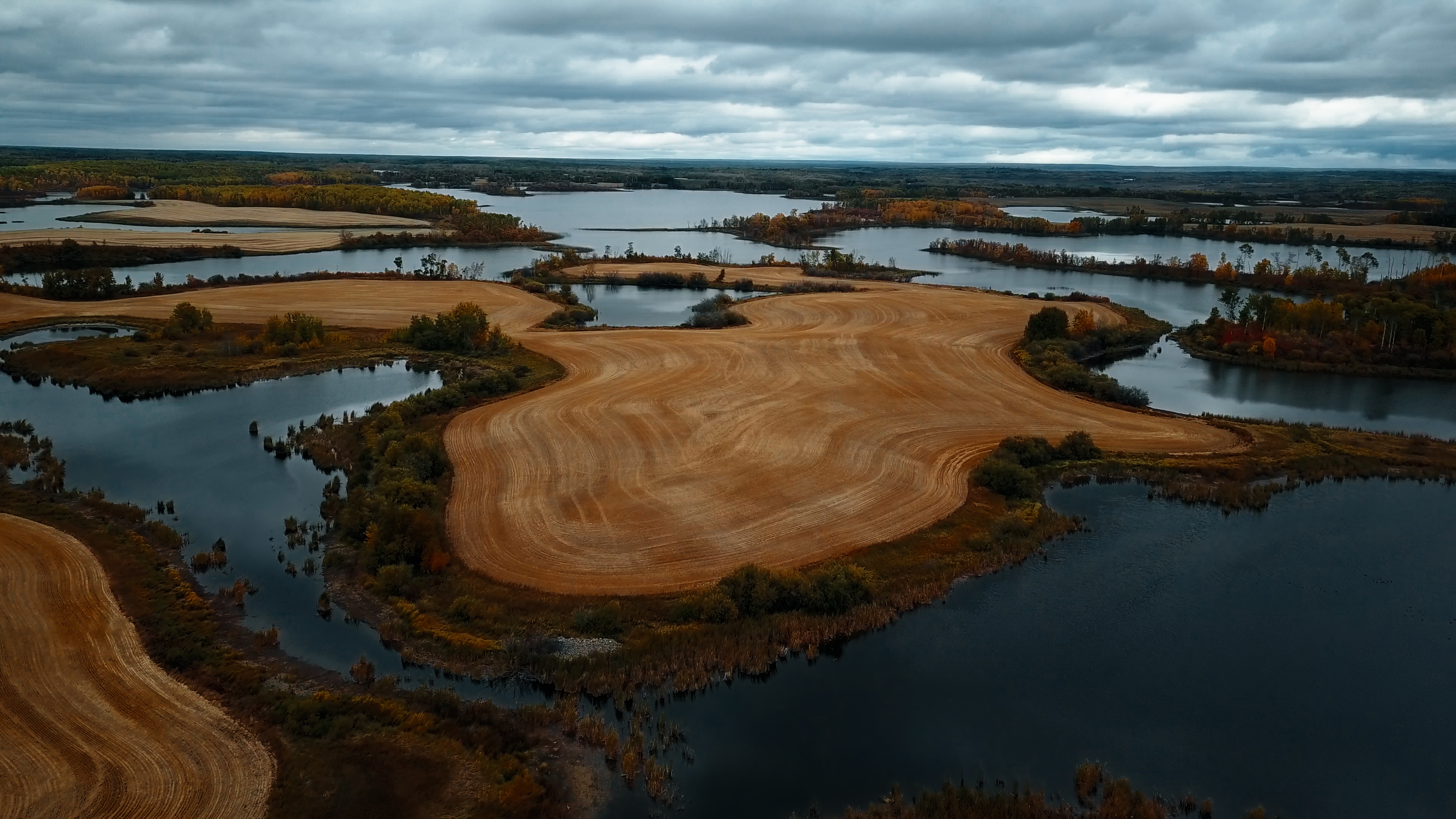
What makes Manitoba even more special is its position at the front end of the fall migration. Each autumn, the first major flights of ducks, geese, and cranes funnel into Manitoba as they begin their journey south. These are fresh birds that have been unpressured by hunters farther down the flyways, which often leads to more responsive calling, better decoying, and overall more action-packed hunts. It’s a rare opportunity to experience waterfowl in their most natural, unspoiled state.
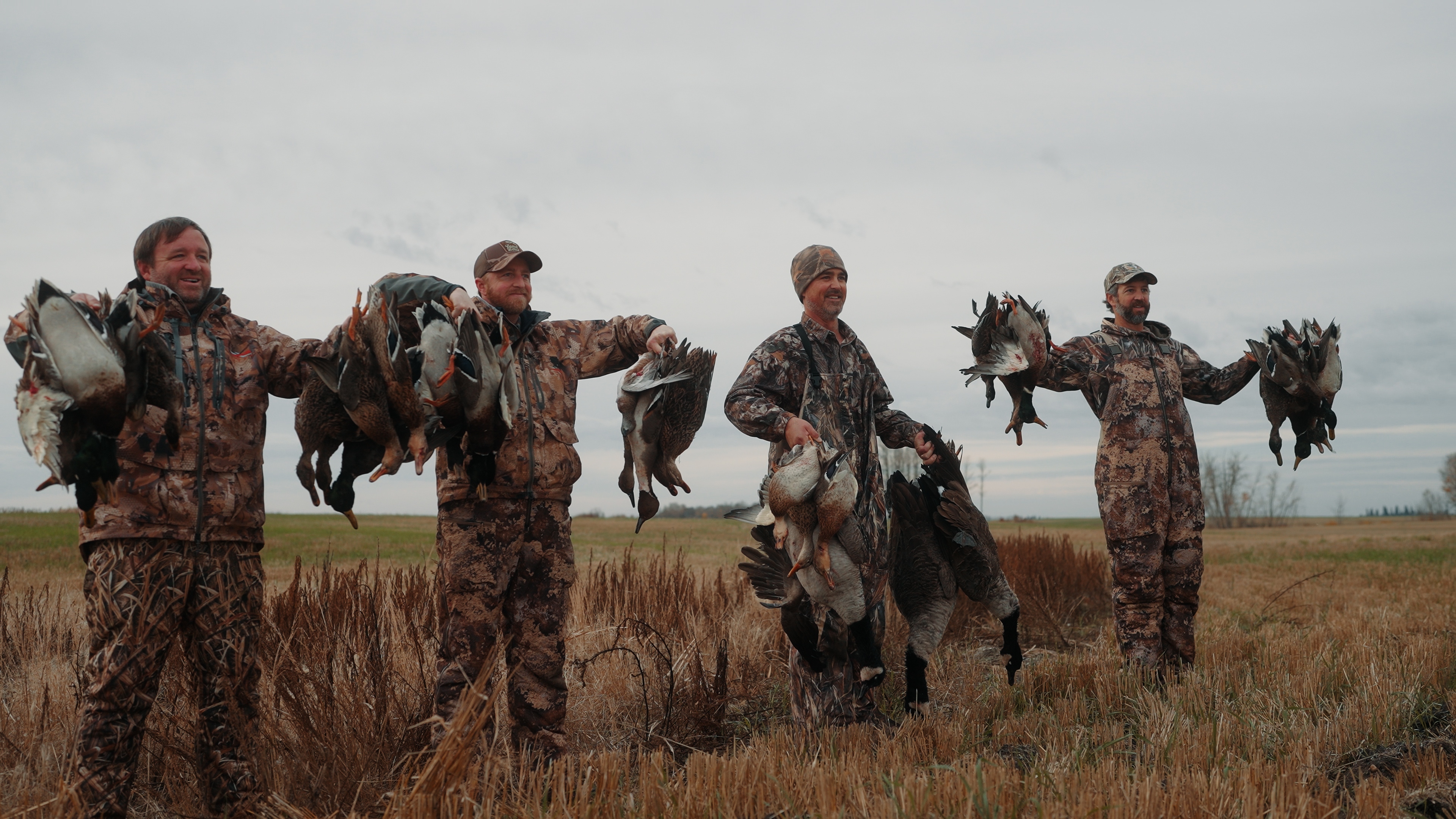
Whether you’re calling through the fog of a crisp morning, watching mallards drop into a barley field at sunrise, or hearing the distant murmur of snow geese over the Hudson Bay flats, hunting waterfowl in Manitoba is more than just a trip; it’s an experience that connects you to one of nature’s greatest migrations. With world-class habitat, rich tradition, and endless opportunity, there’s no better place to kick off the waterfowl season than right here in Manitoba.
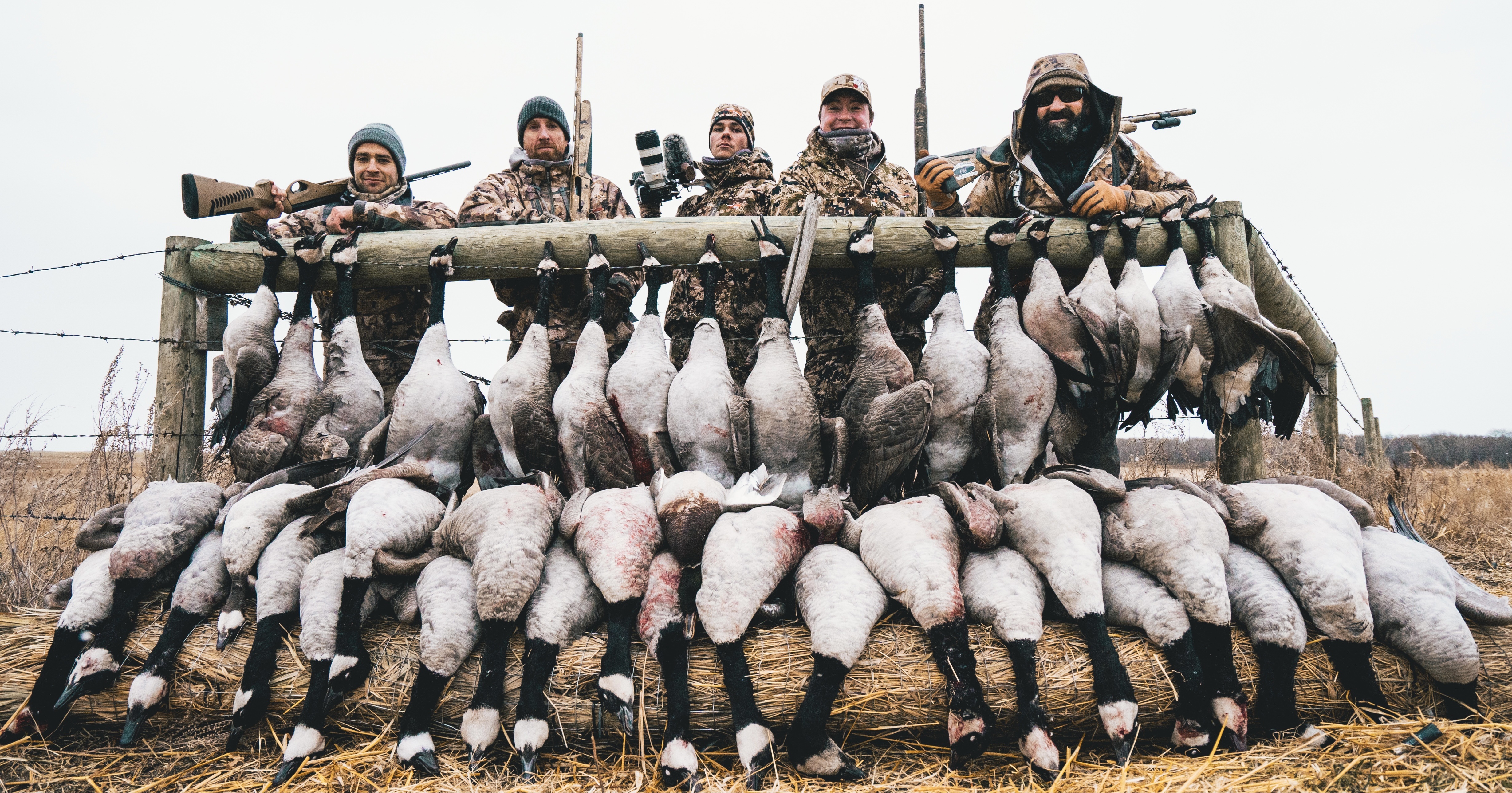
After a successful hunt, there’s nothing better than enjoying the fruits of your efforts. Explore these tried-and-true recipes from past blogs below to bring the taste of Manitoba’s waterfowl to your table.
Related Content:
28 Turcotte Cove Winnipeg, MB R3R 3V9 (204) 294-2694 Website
. Cape Tatnam, Hudson Bay Coast, MB . 1-204-982-9680 Website
26-392 PTH 276 Waterhen, MB R0L 2C0 (204) 628-3491 Website
Box 62 POINTE DU BOIS, MB R0E 1N0 (204) 884-2321 Website






